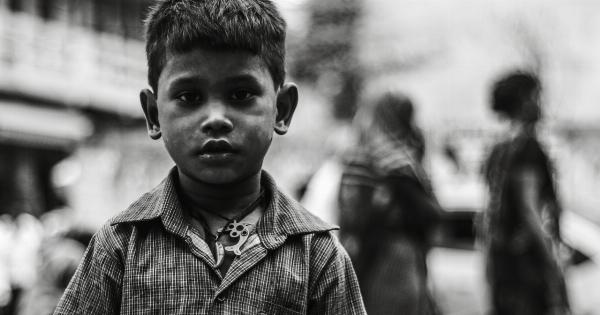As parents, caregivers, or guardians, it is our responsibility to ensure the safety and well-being of children at every stage of their development.
However, accidents can happen, and children can get hurt, especially during their early years when they are still learning and exploring the world around them. Understanding the potential risks and hazards at different stages of development can help us take appropriate measures to keep our little ones safe.
In this article, we will explore what kids are most likely to get hurt from at different stages of their development.
Infancy (0-12 months)
During infancy, babies are extremely vulnerable and reliant on their caregivers for everything. As they begin to explore their environment, there are a few common hazards that can pose a risk to their safety:.
- Falls: Babies can easily roll off a bed, changing table, or any elevated surface, resulting in injuries.
- Burns: Hot liquids, such as bathwater or coffee, can scald a baby’s sensitive skin if not handled carefully.
- Choking: Small objects, toys, or food that are not appropriate for their age can pose a choking hazard.
- Suffocation: Soft bedding, pillows, or toys in the crib can increase the risk of suffocation during sleep.
- Poisoning: Household cleaning products, medications, or plants within a baby’s reach can be ingested and cause poisoning.
Toddlerhood (1-3 years)
As children transition into toddlerhood, they become more mobile and curious about their surroundings. This age group is known for their boundless energy and eagerness to explore, which puts them at a higher risk of certain injuries:.
- Accidental Falls: Toddlers often stumble and fall while learning to walk or climb, making them prone to head injuries, fractures, and bruises.
- Scalds and Burns: Hot liquids, like boiling water or stovetop items, can cause severe burns if toddlers are not adequately supervised.
- Choking and Foreign Body Ingestion: Toddlers tend to put objects in their mouths, including small toys, coins, or food, which can lead to choking or blockage of the airway.
- Cuts and Bruises: As their motor skills develop, toddlers are more likely to encounter sharp objects or rough play that can result in cuts and bruises.
- Water-related accidents: Whether it’s a bathtub, swimming pool, or even a bucket of water, drowning is a significant risk for toddlers if left unattended.
Preschool Age (3-5 years)
During the preschool years, children continue to refine their motor skills and gain more independence, which expands their environment for potential hazards. Some common risks for preschoolers include:.
- Playground Accidents: Falls from playground equipment, such as swings or jungle gyms, can lead to broken bones or head injuries.
- Stranger Danger: As preschoolers become more sociable, it is crucial to teach them about stranger awareness and safety when interacting with unfamiliar individuals.
- Bike or Car Accidents: While learning to ride a tricycle or bicycle, children may be at risk of collisions with objects or vehicles on the road.
- Burns and Scalds: Preschoolers may have access to hot stovetops, irons, or hot water, which can cause severe burns if they are not supervised or instructed on proper safety precautions.
- Poisoning: With an increased ability to climb and explore, preschoolers may be more likely to ingest harmful substances, including medications, cleaning products, or pesticides.
School Age (6-12 years)
As children enter school age, they gain more cognitive abilities and independence. However, new risks emerge due to their increased exposure to various environments, activities, and peer interactions:.
- Sports Injuries: Participating in sports activities without proper protective gear and supervision can result in sprains, fractures, or head injuries.
- Stranger Danger: Reinforcing the importance of stranger awareness remains crucial as children begin to navigate their surroundings more independently.
- Water-related Accidents: Whether it’s swimming in pools, lakes, or other recreational waters, unsupervised play near water can lead to drowning incidents.
- Transportation Accidents: As students begin to walk or ride bicycles to school, road safety becomes a concern, with risks of collisions or accidents during school bus transportation.
- Internet Safety: With increased access to technology, children may face risks associated with online activities, such as cyberbullying, exposure to inappropriate content, or online predators.
Adolescence (12-18 years)
During adolescence, children transition into young adults and start exploring their identity and independence. While they may be more aware of safety concerns, new risks emerge due to various factors:.
- Motor Vehicle Accidents: The risk of car accidents increases as teenagers start driving and gain more freedom on the road.
- Sports Injuries: Adolescents may engage in high-impact sports or extreme activities that can result in severe injuries if proper safety measures are not followed.
- Substance Abuse: Experimentation with drugs, alcohol, or tobacco becomes a concern during this stage, which can lead to short-term accidents or long-term health issues.
- Psychological and Emotional Challenges: Adolescents may face mental health challenges that can impact their overall well-being, requiring support and intervention from caregivers.
- Unsafe Relationships: As teenagers begin dating, there is a risk of unhealthy or abusive relationships, which can have physical, emotional, and psychological consequences.
Throughout each stage of development, it is crucial for parents, caregivers, and guardians to create a safe environment, provide proper supervision, and educate children about potential risks.
By promoting awareness and implementing appropriate safety measures, we can help minimize the likelihood of accidents or injuries during their journey towards adulthood.




























